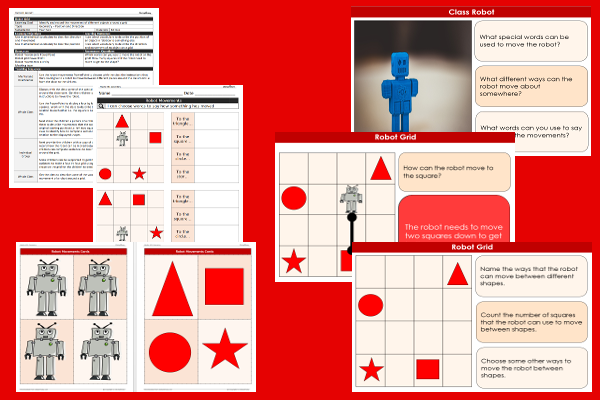Lesson Two – Robot Grid

This maths teaching pack for Key Stage One gets the children to practise identifying and recording the correct movements of some robot characters between pairs of shapes placed in different locations around a grid.
The class can design their own example grids and suggest how a robot character could move around the grid using special vocabulary words for direction and movement.
Download this teaching pack including a lesson plan, classroom activities and an interactive presentation to practise identifying and recording the correct movements of some robot characters between pairs of shapes placed in different locations around a grid
Activities in this teaching pack include a worksheet for core and extension ability grids to identify and record the movement of different objects around different locations on a grid and a set of cards for support ability levels to suggest how a robot character might move between pairs of shapes.
The interactive presentation gets the children to practise identifying and recording the correct movements of some robot characters between pairs of shapes in different locations around a grid.
This lesson is part of a maths scheme of work to get the children to practise selecting and using the correct vocabulary words to describe and control the position and movements of a robot character around a grid or other locations. There are teaching activities for shared learning, differentiated worksheets to support independent learning and interactive presentations to introduce concepts and key skills.
-

Garden Numbers
Identify and model some of the different calculation techniques that can be used when adding pairs of single digit numbers
-

Summer Stories
Practise composing and presenting narrative stories with familiar settings to illustrate the events and experiences that could happen during the summer
-

Fraction Numbers
Investigate how to use concrete equipment, diagrams and calculations to identify and record the matching fractions of different numbers
-

Family Holiday Lists
Explore how to compile sentences punctuated using commas to list some of the special things that families can use, complete and experience on a holiday
